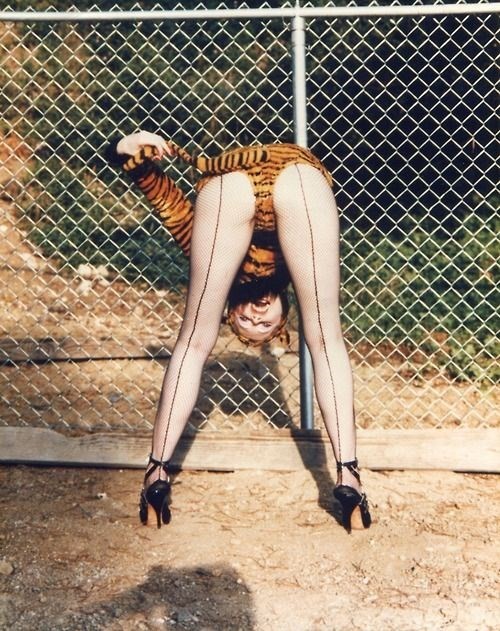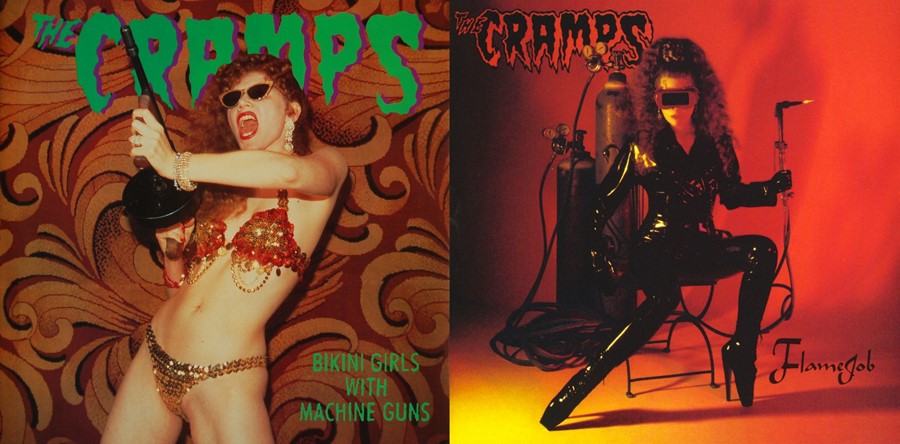We examine the legacy of a woman whose sexuality is only outmatched by her musical prowess
“Poison Ivy, a golden harem sphinx, a sheen of perspiration over her alabaster body. Sweat streaks her guitar as she plays keen bloodnotes. The songs are of decapitations, transmogrifications, psycho frenzies, invading saucermen, voodoo, and pussy. Always pussy. It’s a smoking, fuzzy, wild sound, full of an intensity that lies halfway betweebn sexual stimulation and demonic possession.” So wrote Jas Obrecht in the pages of Guitar Player magazine in 1990: 14 years after The Cramps formed and Kristy Marlana Wallace became guitarist Poison Ivy. Her instrumental role in the development of punk rock and invention of psychobilly often forgotten – dismissed in comparison to her husband, fellow band member Lux Interior – Poison Ivy simultaneously represents the sexism of the music industry through its reluctance to acknowledge her talents ("NOBODY ever talks to me about music or guitar" she once exclaimed to DJ Johnson) and a raging refusal to acquiesce to its misogyny.

Defining Features
"We wanted to be as shocking, sexy and original as the great culture changing rock and roll pioneers were during the 50s and 60s," read the line notes to album How To Make A Monster. And, with a wardrobe of bondage looks and pin-up costumes, both Poison Ivy and Lux Interior were; they are the quintessential sex gods of punk rock and Ivy in particular played up to the stereotypes of sexuality with emphatic glee. She had worked as a dominatrix in her previous life, and her renowned proclivity towards fetishwear actually resulted in developing an allergy – "I have an amazing collection of latex garments and I wore it to death, and now I’m allergic to it. I started getting really weird hives," she once told George Petros.
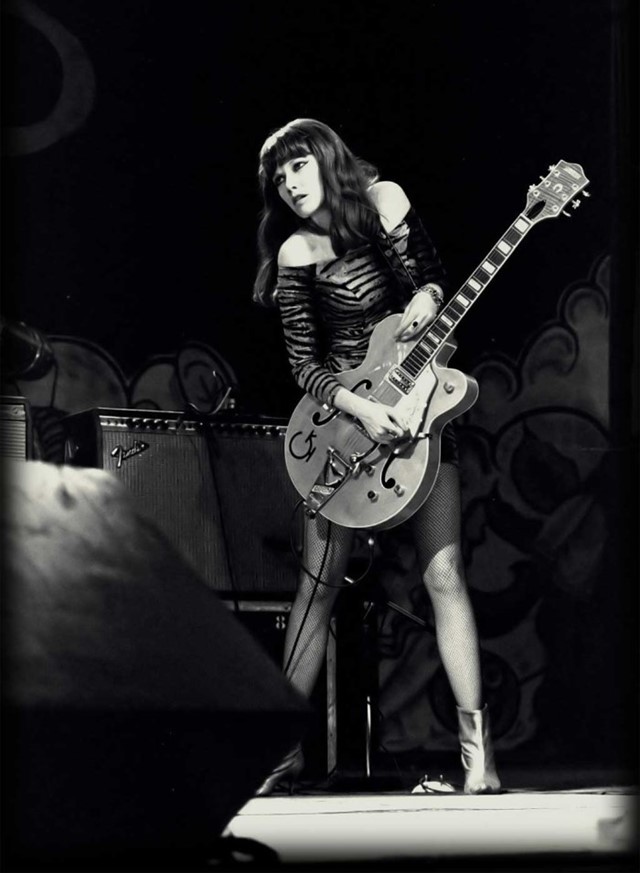
Additionally, it wasn't just Poison Ivy's music that employed the aesthetic of rockabilly and garage rock; as well as dressing as a macabre, Morticia-style vamp, Poison Ivy could transform herself into a Bettie Page figure with inimitable prowess. With covers and videos devoted to the "Queen of Pin-Up" (who moonlighted as a bondage model as well as performing as a calendar girl), The Cramps actively tapped in to pop culture sexuality and revealed its 'darker' side. The band's aesthetic came packaged as a whole: their music, performance and B-movie visuals inexorably linked. And, by performing on stage with now-legendary skill while dressed in the costumes of female titillation, Poison Ivy was challenging the single-faceted stereotypes of womanhood. Did she get stick for it? "Some other band, some female guitar player, said she got hassled, but I don't. I guess I look like I would dish it back."
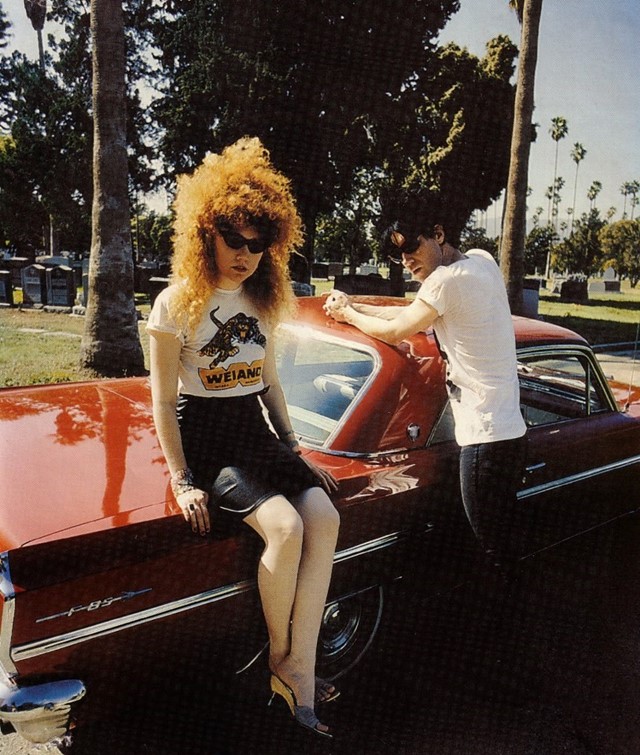
Seminal Moments
During a career that saw her play phenomenally outrageous shows, there are plenty of seminal moments to choose from – in fact, in 1978 The Cramps performed with The Mutants at Napa State Mental Hospital in Sacramento, after which Lux claims 16 patients escaped ("we always had a problem with audiences not being quite what we'd like them to be and those audiences got right into it" he says in a TV interview, At Home With The Cramps). But, clearly, the most seminal moment for Ivy is that which saw her meet her partner in crime.
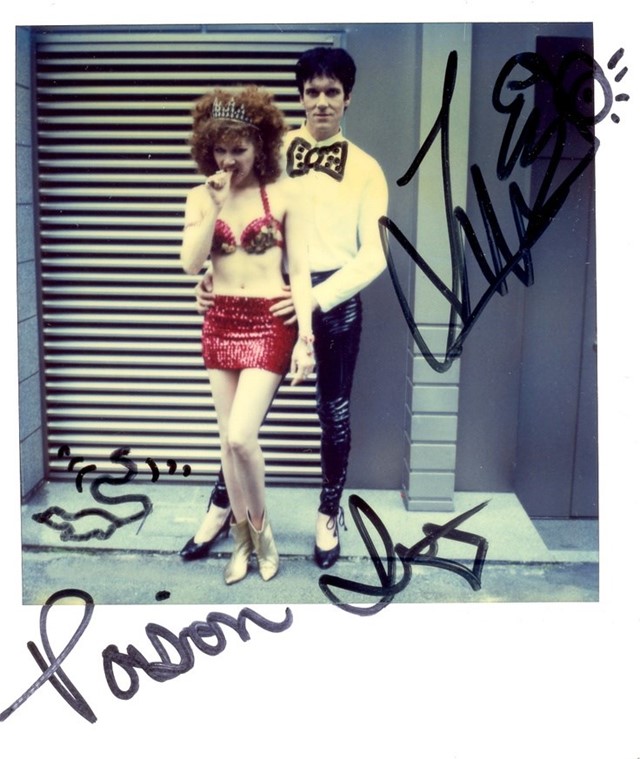
There are a number of stories about how Poison Ivy and Lux Interior first met – one that she was hitchiking, one that he saw her walking down the street with rips in her shorts and red pants showing and fell in love at first sight (or, rather, "got a hard on, three seconds after seeing her"), one that they found eachother at a party at Sacramento University. But perhaps it is the story that Poison Ivy explained to Nicholas Barber that is best figured to their inclinations towards the psychedelic: "We met up in a class called Art and Shamanism. The textbook for that class was called The Sacred Mushroom and the Cross, and the subject of that book is how the real topic of the Bible is the Amanita muscaria mushroom and that Christ is a metaphor for this magic mushroom." Their subsequent relationship – both musically and romantically – has since become one of the most renowned in subcultural history and Lux's death in 2009 of a heart condition marked a tragedy for music as well as, obviously, his wife of 37 years.

She's AnOther Woman because...
Poison Ivy subverted 70s stereotypes around the inadequacies of female musicians, and did it while dressing however she wanted rather than trying to conceal her sexuality. She looked fabulous, sounded even better and has left a legacy in her wake that has informed a generation of musicians from the White Stripes to The Horrors. She is an icon of style and sound alike and her transformative capabilities within both are utterly enviable: AnOther Woman, indeed.
